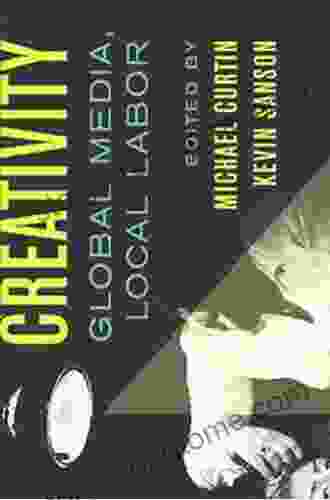The Psychology of Organizational Change: Unraveling the Human Dynamics of Transformation

Organizational change is a multifaceted and intricate process, one that involves not only strategic planning and operational adjustments but also a profound understanding of the human psyche. The psychology of organizational change delves into the complexities of individual and collective behavior during periods of transition, providing invaluable insights for leaders seeking to navigate these challenging waters. This comprehensive guide will shed light on the psychological underpinnings of change, empowering readers to cultivate a change-ready workforce, foster employee engagement, and ultimately drive successful transformations.
The Importance of Understanding the Psychology of Change
Comprehending the psychological dimensions of organizational change is paramount for several reasons. Firstly, it enables leaders to anticipate and address employee resistance, a common obstacle that can derail change initiatives. By understanding the motivations and fears that drive resistance, leaders can develop targeted strategies to mitigate it and foster a sense of buy-in. Secondly, a thorough grasp of the psychology of change allows leaders to tailor their communication and engagement efforts to the specific needs of their audience. By speaking to employees' emotions and concerns, leaders can build trust and create a shared understanding of the change process.
5 out of 5
| Language | : | English |
| File size | : | 5350 KB |
| Text-to-Speech | : | Enabled |
| Screen Reader | : | Supported |
| Enhanced typesetting | : | Enabled |
| Word Wise | : | Enabled |
| Print length | : | 354 pages |
Thirdly, understanding the psychology of change empowers leaders to cultivate a change-ready workforce. By creating a culture of adaptability and resilience, leaders can equip their employees with the mindset and skills necessary to embrace change as an opportunity for growth and development. Finally, a deep understanding of the human dynamics of change allows leaders to identify and leverage change champions, individuals who can serve as role models and advocates for the transformation.
Theories of Organizational Change
Various theories have been proposed to explain the psychological processes involved in organizational change. These theories provide frameworks for understanding how individuals and groups respond to change, and they can guide leaders in developing effective change strategies.
Lewin's Three-Stage Model
One of the most well-known theories of organizational change is Lewin's Three-Stage Model. This model suggests that change occurs in three distinct stages: unfreezing, changing, and refreezing.
- Unfreezing: In this stage, the organization's current state is disrupted, and employees are made aware of the need for change.
- Changing: During this stage, the organization undergoes the actual change process. New policies, procedures, or structures are implemented, and employees begin to adapt to the new ways of ng things.
- Refreezing: In this final stage, the organization stabilizes around the new state, and employees have fully integrated the changes into their daily work.
Kotter's Eight-Step Model
Another influential theory of organizational change is Kotter's Eight-Step Model. This model provides a step-by-step guide for leaders to follow when implementing change.
- Establish a Sense of Urgency: Create a compelling case for change and communicate it to all employees.
- Form a Powerful Guiding Coalition: Assemble a team of influential leaders who are committed to the change.
- Create a Vision for Change: Develop a clear and inspiring vision of the future state of the organization.
- Communicate the Vision: Share the vision with all employees and communicate the benefits of the change.
- Empower Broad-Based Action: Remove barriers and empower employees to take action.
- Generate Short-Term Wins: Celebrate early successes and build momentum for the change.
- Consolidate Gains and Produce More Change: Continue to make changes and reinforce the new behaviors.
- Anchor New Approaches in Culture: Integrate the changes into the organization's culture and reward employees for embracing the new ways of ng things.
Managing Employee Resistance to Change
Resistance to change is a common challenge that leaders face during organizational transformations. This resistance can stem from various factors, including fear of the unknown, loss of status or power, or disruption to established routines. To effectively manage employee resistance, leaders should:
- Identify the Sources of Resistance: Understand the specific reasons why employees are resisting the change.
- Address Employee Concerns: Communicate with employees about their concerns and provide them with support and resources.
- Involve Employees in the Change Process: Give employees a voice in the change process and empower them to contribute their ideas.
- Provide Training and Development: Ensure that employees have the skills and knowledge they need to succeed in the new environment.
- Celebrate Successes: Recognize and reward employees for their contributions to the change process.
Developing a Change-Ready Workforce
Creating a change-ready workforce is essential for successful organizational transformations. This involves cultivating a culture of adaptability, resilience, and continuous learning. Leaders can foster a change-ready workforce by:
- Creating a Vision of the Future: Share a compelling vision of the future state of the organization and communicate the benefits of the change.
- Encouraging Employee Participation: Involve employees in the planning and implementation of change initiatives.
- Providing Training and Development Opportunities: Ensure that employees have the skills and knowledge they need to adapt to the new ways of ng things.
- Rewarding Change Champions: Recognize and reward employees who embrace change and serve as role models for others.
- Celebrating Successes: Create a culture of celebration and reinforce the positive outcomes of change.
The psychology of organizational change is a complex and ever-evolving field. By understanding the human dynamics of change, leaders can develop effective strategies to navigate the challenges and opportunities of transformation. Through a deep appreciation of employee motivations, fears, and aspirations, leaders can foster a change-ready workforce that is empowered to embrace new ways of working and drive the organization towards a successful future.
5 out of 5
| Language | : | English |
| File size | : | 5350 KB |
| Text-to-Speech | : | Enabled |
| Screen Reader | : | Supported |
| Enhanced typesetting | : | Enabled |
| Word Wise | : | Enabled |
| Print length | : | 354 pages |
Do you want to contribute by writing guest posts on this blog?
Please contact us and send us a resume of previous articles that you have written.
 Book
Book Novel
Novel Page
Page Chapter
Chapter Text
Text Story
Story Genre
Genre Reader
Reader Library
Library Paperback
Paperback E-book
E-book Magazine
Magazine Newspaper
Newspaper Paragraph
Paragraph Sentence
Sentence Bookmark
Bookmark Shelf
Shelf Glossary
Glossary Bibliography
Bibliography Foreword
Foreword Preface
Preface Synopsis
Synopsis Annotation
Annotation Footnote
Footnote Manuscript
Manuscript Scroll
Scroll Codex
Codex Tome
Tome Bestseller
Bestseller Classics
Classics Library card
Library card Narrative
Narrative Biography
Biography Autobiography
Autobiography Memoir
Memoir Reference
Reference Encyclopedia
Encyclopedia Louis L Picone
Louis L Picone Luana Vergari
Luana Vergari Life Style
Life Style Lee C Camp
Lee C Camp Lisa L Osen
Lisa L Osen Lilia Sixtos
Lilia Sixtos Lucy Agace
Lucy Agace Sean Nee
Sean Nee Mike Ellis
Mike Ellis Lynne Sandles
Lynne Sandles Sonal Ved
Sonal Ved Maggie Schauer
Maggie Schauer Lee Shelby
Lee Shelby Mal Warwick
Mal Warwick Randy Becton
Randy Becton Nikos Houssos
Nikos Houssos Lyssie Lakatos
Lyssie Lakatos Mark Ezell
Mark Ezell Lynford Graham
Lynford Graham Mary Miley Theobald
Mary Miley Theobald
Light bulbAdvertise smarter! Our strategic ad space ensures maximum exposure. Reserve your spot today!
 Devon MitchellFollow ·4.4k
Devon MitchellFollow ·4.4k Mikhail BulgakovFollow ·16.9k
Mikhail BulgakovFollow ·16.9k Robert HeinleinFollow ·18.4k
Robert HeinleinFollow ·18.4k Stephen FosterFollow ·14.1k
Stephen FosterFollow ·14.1k Philip BellFollow ·6.8k
Philip BellFollow ·6.8k Edwin CoxFollow ·19.8k
Edwin CoxFollow ·19.8k Dan HendersonFollow ·9.1k
Dan HendersonFollow ·9.1k Rob FosterFollow ·8.1k
Rob FosterFollow ·8.1k

 E.M. Forster
E.M. ForsterThe Real Blueprint to Short-Term Rental Success
Are you ready to create a...

 Mark Mitchell
Mark MitchellMidas Touch: The Astrology Of Wealth
Are you ready to tap into the cosmic forces...

 Grant Hayes
Grant HayesPrecarious Creativity: Unpacking the Global Media and...
In the ever-evolving landscape of the...

 Cameron Reed
Cameron ReedGuru Govind Singh: A Life of Courage and Inspiration for...
Guru Govind Singh, the tenth Sikh guru,...

 Yukio Mishima
Yukio MishimaCastles & Shapes: The Enchanting World of Ris...
In the realm of...

 Jerome Blair
Jerome BlairGolden Keys To Jyotisha Volume Ten: The Ultimate Guide to...
Embark on an...
5 out of 5
| Language | : | English |
| File size | : | 5350 KB |
| Text-to-Speech | : | Enabled |
| Screen Reader | : | Supported |
| Enhanced typesetting | : | Enabled |
| Word Wise | : | Enabled |
| Print length | : | 354 pages |












